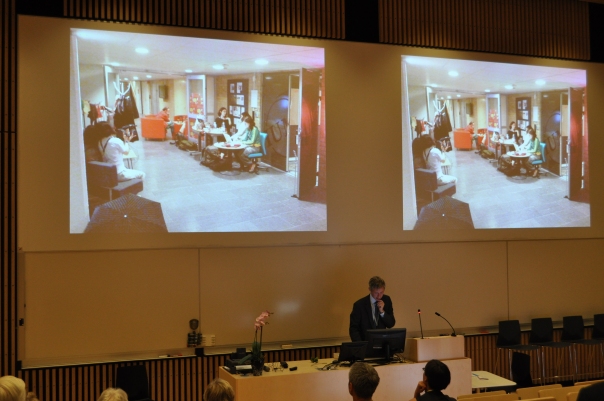Paper and workshop proposal accepted for Digital Past conference 2013 @ Monmouth Wales, 20-21 February 2013. URL:http://www.digitalpast2013.blogspot.co.uk/
Paper: Can the past and history be shared?
There is an interesting divide between historians and the public that must be debated, how to best use virtual heritage, and digital media in general, to learn and share historical knowledge and interpretation. Heritage and history do not have to be a series of slides; space-time-intention can now be depicted and reconfigured. Teaching history through digitally simulated ‘learning by doing’ is an incredibly understudied research area and is of vital importance to a richer understanding of heritage as lived.
However, the actual spatial implications of siting learning tasks in a virtual environment are still largely un-researched. Evaluation of virtual environments has been relatively context-free, designed for user freedom and forward looking creativity. It is still much more difficult to create a virtual place that brings the past alive without destroying it.
There has been an explosion in virtual heritage conferences this century. In the last year alone, there have been calls for digital cultural heritage or virtual heritage by Graphite, VSMM, New Heritage Forum, VRST, VAST, DIME, Archäologie & Computer, and DACH, just to name a few. An outside observer may believe that such academic interest, coupled with recent advances in virtual reality (VR), specifically in virtual environment technology and evaluation, would prepare one for designing a successful virtual heritage environment. Game designers may also be led to believe that games using historical characters, events or settings, may be readily adaptable to virtual heritage. This paper will advance key contextual issues that question both assumptions.
Beacham, R., Denard, H., & Niccolucci, F. (2006). London charter for the computer-based visualization of cultural heritage. Retrieved from http://www.londoncharter.org/introduction.html
Fredrik, D. (2012). Rhetoric, Embodiment, Play: Game Design as Critical Practice in the Art History of Pompeii. Meaningful Play 2012 conference paper.
Retrieved from http://meaningfulplay.msu.edu/proceedings2012/mp2012_submission_178.pdf
Submission 2: Workshop Suggestion: Prototyping and Visualizing Virtual Places
This workshop will primarily be a primer for using 3D visualisation, modelling, video editing and game technologies as quick prototyping and scenario design tools. If attendees request it, time may also be spent on attendee issues, solutions, previous experience, and case studies in utilizing these or similar tools. As well as an overview of these tools and an explanation of their comparable features , there will also be a brief presentation of the presenter’s work in using these tools for designing for cultural and historical interaction.
The proposed workshop will run for 90 minutes. The purpose will be to overview 3D modelling, rendering and animation packages for creating digital places and visualisations of past cultures . The convener will bring the required applications, and make available applications either from a website or via a USB stick.
Tools Previewed
Google Sketchup
Google Sketch up is both a free and commercial 3D application which offers simple modeling and rendering features, a huge warehouse of free 2D and 3D assets, and can export to Blender, Unity,
Unreal UDK (via kmz4 format) and Google Earth.
Blender 3D runs on MAC PC and Linux, Blender is totally free, and the new version 2.5 and its derivatives offers a much improved interface. The bulk of the workshop will concentrate on Blender, as not only is it an impressive modeling and rendering package, but it also offers interesting compositing and video editing features. Blender also has a simple game engine and has possibilities for exporting to Apple iOS.
UNITY has free and trial versions, runs on MAC, PC, Android and iOS, and game consoles. It can import many formats, and is easy to learn, or to add assets to. Scripting can be by JavaScript, Python or C# but there are standard assets and add-ons that can create 3D objects and environments very quickly. It can also create webplugins that run inside browsers or even inside MOODLE.


